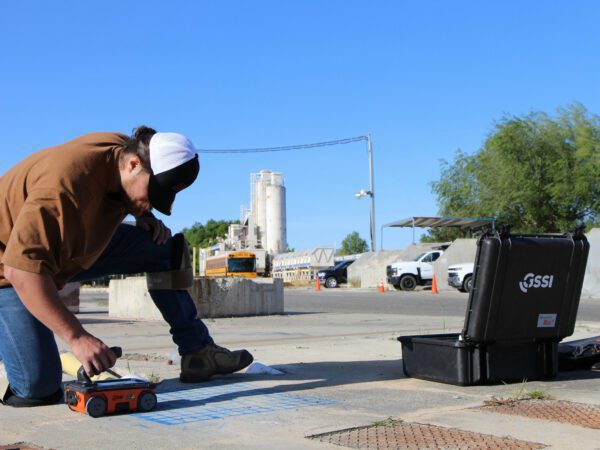Enhancing Job Planning and Execution Through Advanced Concrete Scanning Strategies
In the world of task preparation and implementation, precision and insight are essential components that can make the distinction in between success and obstacles. Advanced concrete scanning techniques have actually arised as an advanced tool established to elevate the criteria of job administration within the building sector. By utilizing advanced innovation, these strategies provide a glimpse right into the architectural stability of a building also prior to the initial brick is laid. The ramifications of such developments are extensive, assuring a standard shift in just how jobs are come close to and provided.
Benefits of Advanced Concrete Scanning Strategies

Improved Accuracy in Task Assessments
Enhancing task evaluations via advanced concrete scanning techniques dramatically enhances the accuracy and reliability of building and construction analyses. By using innovative scanning innovations such as ground-penetrating radar (GPR) and 3D imaging, job teams can currently acquire in-depth insights into the problem of concrete structures, recognizing prospective defects or weaknesses that might not be noticeable to the naked eye. This improved degree of accuracy in job evaluations enables construction specialists to make even more informed decisions relating to repair service and maintenance approaches, causing improved overall job end results.
In addition, the raised precision in job assessments attained with advanced concrete scanning methods assists in lessening the threat of unexpected problems during the building and construction phase. By proactively spotting hidden anomalies within concrete structures, such as rebar rust or voids, job teams can attend to these issues early, staying clear of pricey hold-ups and rework later on in the project lifecycle. Ultimately, the boosted accuracy in task assessments assisted in by innovative concrete scanning techniques adds to better efficiency, cost-effectiveness, and quality in building tasks.
Early Recognition of Architectural Obstacles
Very early discovery of architectural obstacles plays an essential function in ensuring the honesty and safety of concrete frameworks throughout the building and construction procedure. Recognizing prospective concerns at a beginning permits for prompt treatment, preventing costly rework, routine delays, and security threats. Advanced concrete scanning strategies, such as ground-penetrating radar (GPR) and 3D imaging, enable project groups to reveal surprise defects, gaps, reinforcement design inconsistencies, and various other abnormalities that can jeopardize the framework's stability.
By carrying out these techniques throughout the preparation and implementation stages, building and construction professionals can proactively resolve structural challenges prior to they intensify into significant issues. As an example, discovering insufficient concrete cover over reinforcement bars at an early stage can prevent corrosion and structural weakening in the future - RainierGPR Service Areas. Additionally, determining variants in concrete density or density can aid maximize product use and make certain consistent strength homes across the framework

Eventually, early recognition of architectural difficulties via innovative concrete scanning not just improves the total quality and longevity of the building but also adds to a more secure developed atmosphere for occupants and customers.
Boosted Security Steps in Construction
The implementation of durable safety procedures is important in the building sector to alleviate dangers and safeguard the health of stakeholders and employees. To boost safety and security measures, building and construction firms are progressively adopting technical developments such as wearable devices that keep an eye on workers' vital indicators and find potential health concerns in real-time. By focusing on safety with the incorporation of sophisticated technologies and detailed training programs, building projects can significantly decrease crashes and create have a peek here a safe working atmosphere for all involved.
Streamlining Job Management Processes
To maximize operational effectiveness and make certain project success in the building sector, a focus on simplifying project administration procedures is important. By applying efficient project administration processes, building tasks can decrease delays, reduce expenses, and boost general performance. One key element of simplifying task administration is the usage of advanced innovations such as Building Info Modeling (BIM) software program, which makes it possible for real-time cooperation, clash detection, and accurate job scheduling. Additionally, the adoption of cloud-based project administration systems allows for seamless interaction amongst staff member, instant access to task data, and the capability to track progression in real-time.

Conclusion
To conclude, the use of sophisticated concrete scanning techniques supplies various benefits for project planning and execution. These strategies give better precision in project assessments, early recognition of architectural obstacles, boosted precaution in building and construction, and streamlined task monitoring procedures. Including these techniques right into job workflows can ultimately cause a lot more effective and efficient outcomes in construction tasks.
Eventually, the boosted accuracy in job analyses promoted by advanced concrete scanning Visit Your URL methods contributes to better performance, cost-effectiveness, and quality in construction jobs. RainierGPR Service Areas.
To maximize operational performance and ensure task success in the building industry, an emphasis on improving project monitoring procedures is vital. By implementing effective project monitoring processes, building and construction jobs can minimize hold-ups, minimize costs, and enhance total productivity. By simplifying job monitoring processes with modern technology combination, clear communication, and data-driven methods, construction projects can achieve higher performance, cost-effectiveness, and successful end results.
These techniques give RainierGPR Service Areas improved precision in project analyses, early recognition of structural obstacles, enhanced safety and security measures in building, and structured task management processes.